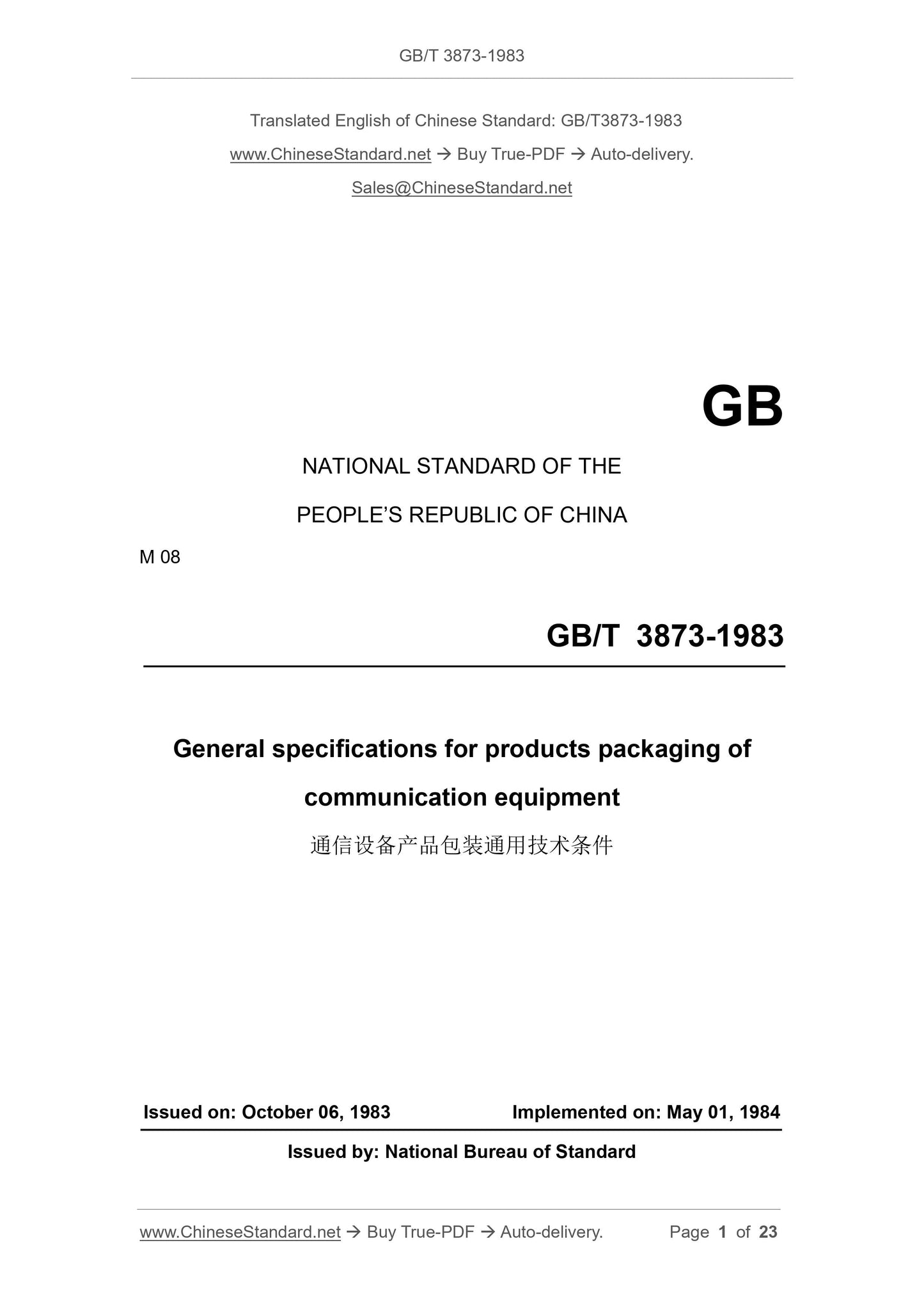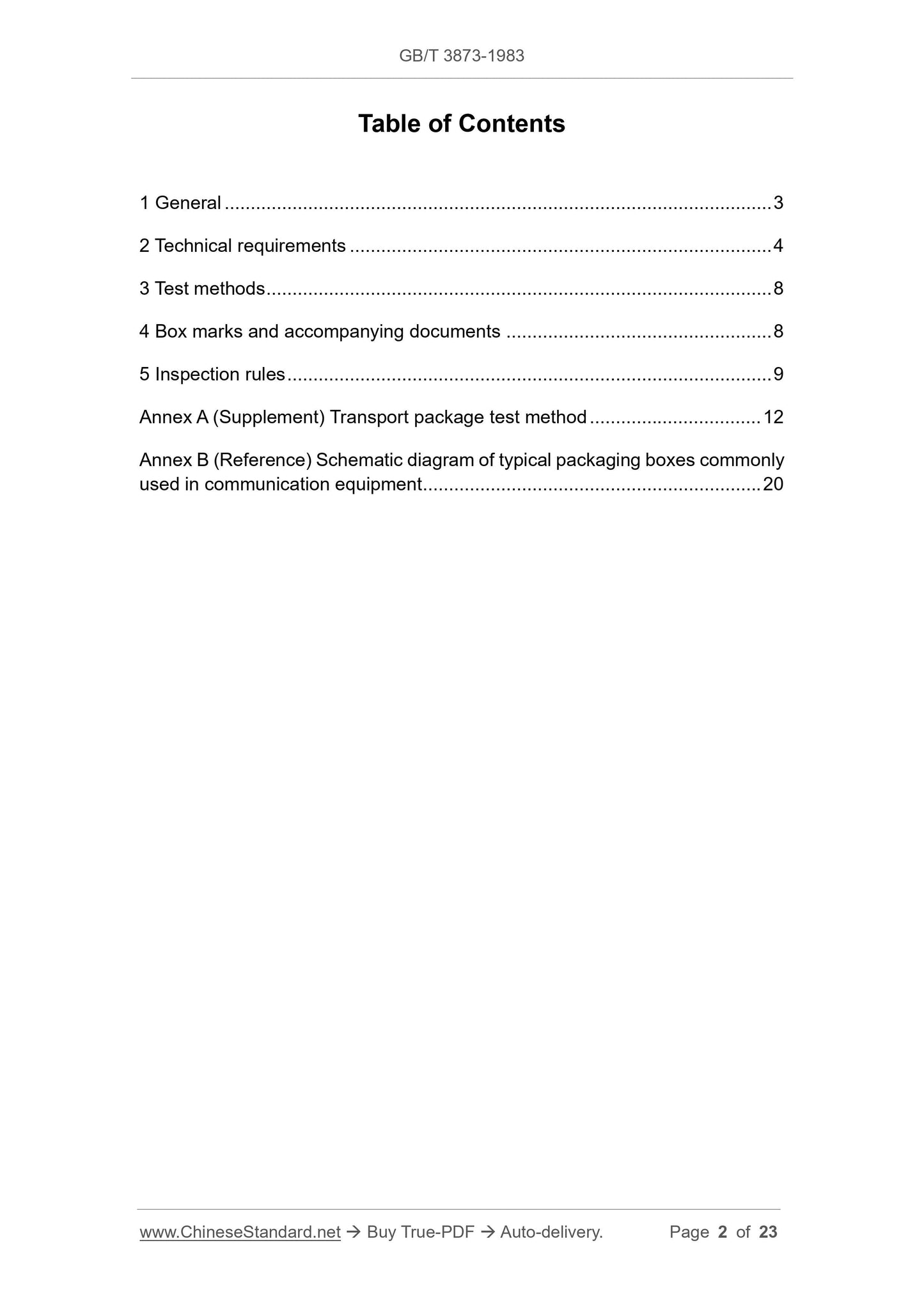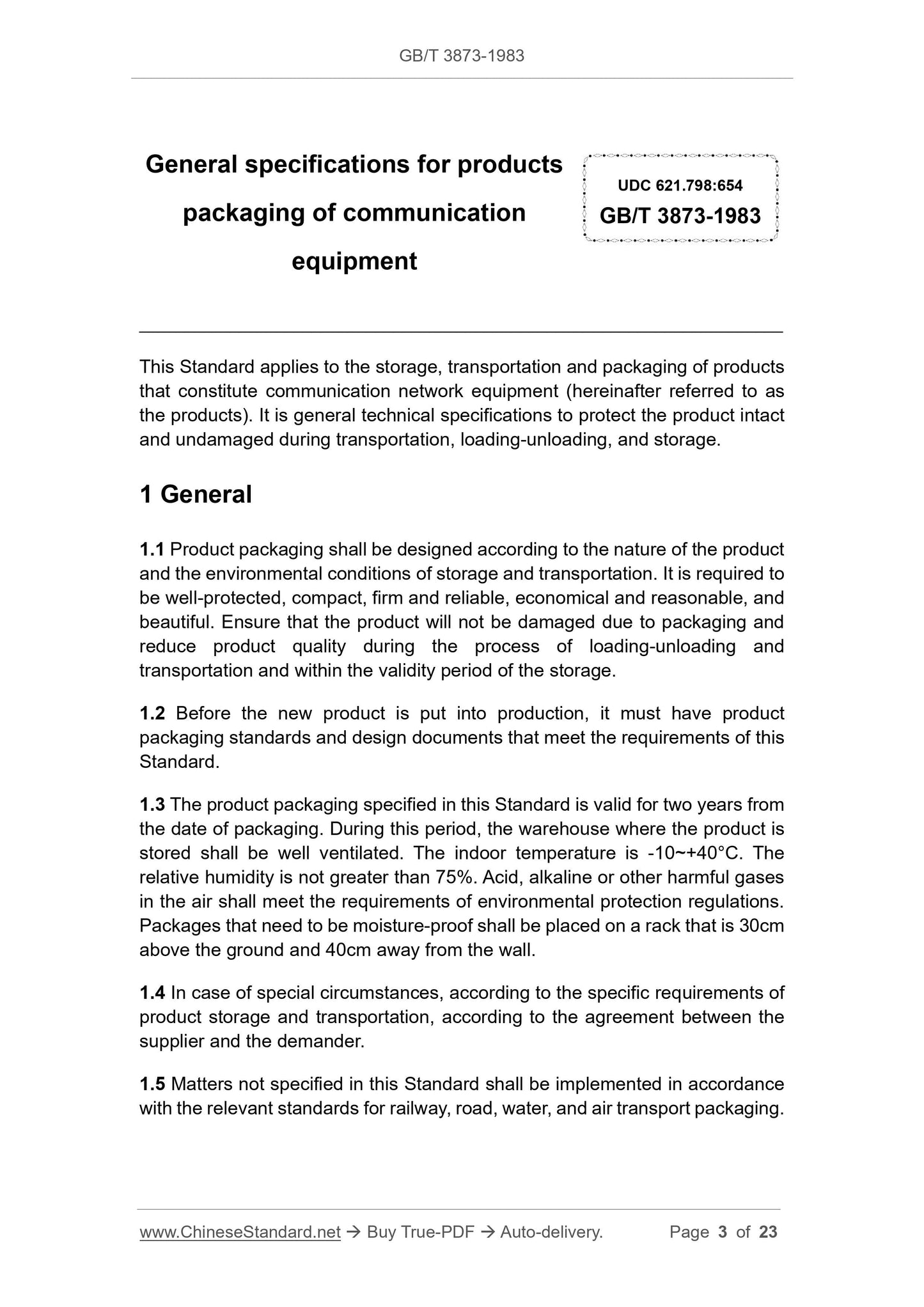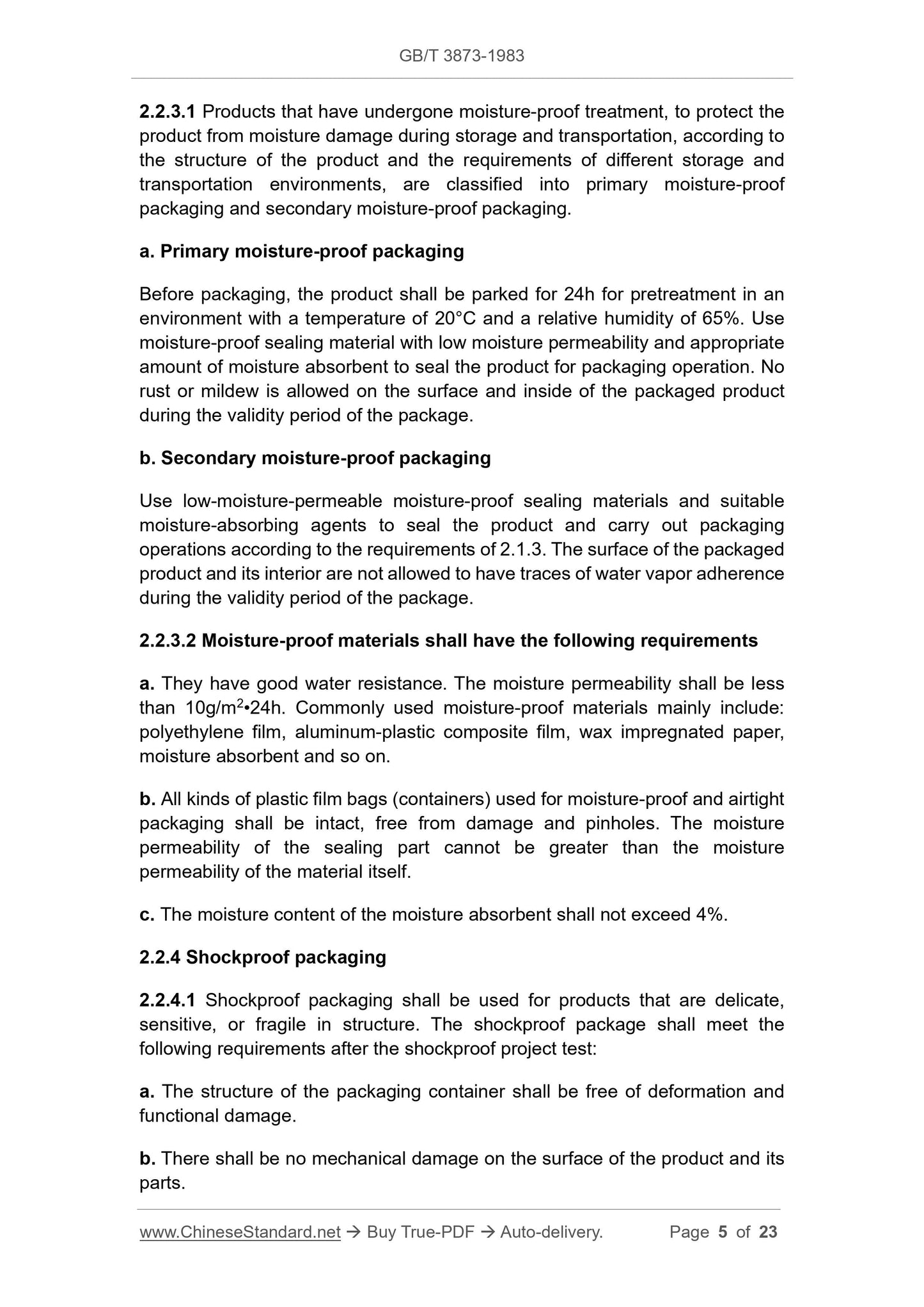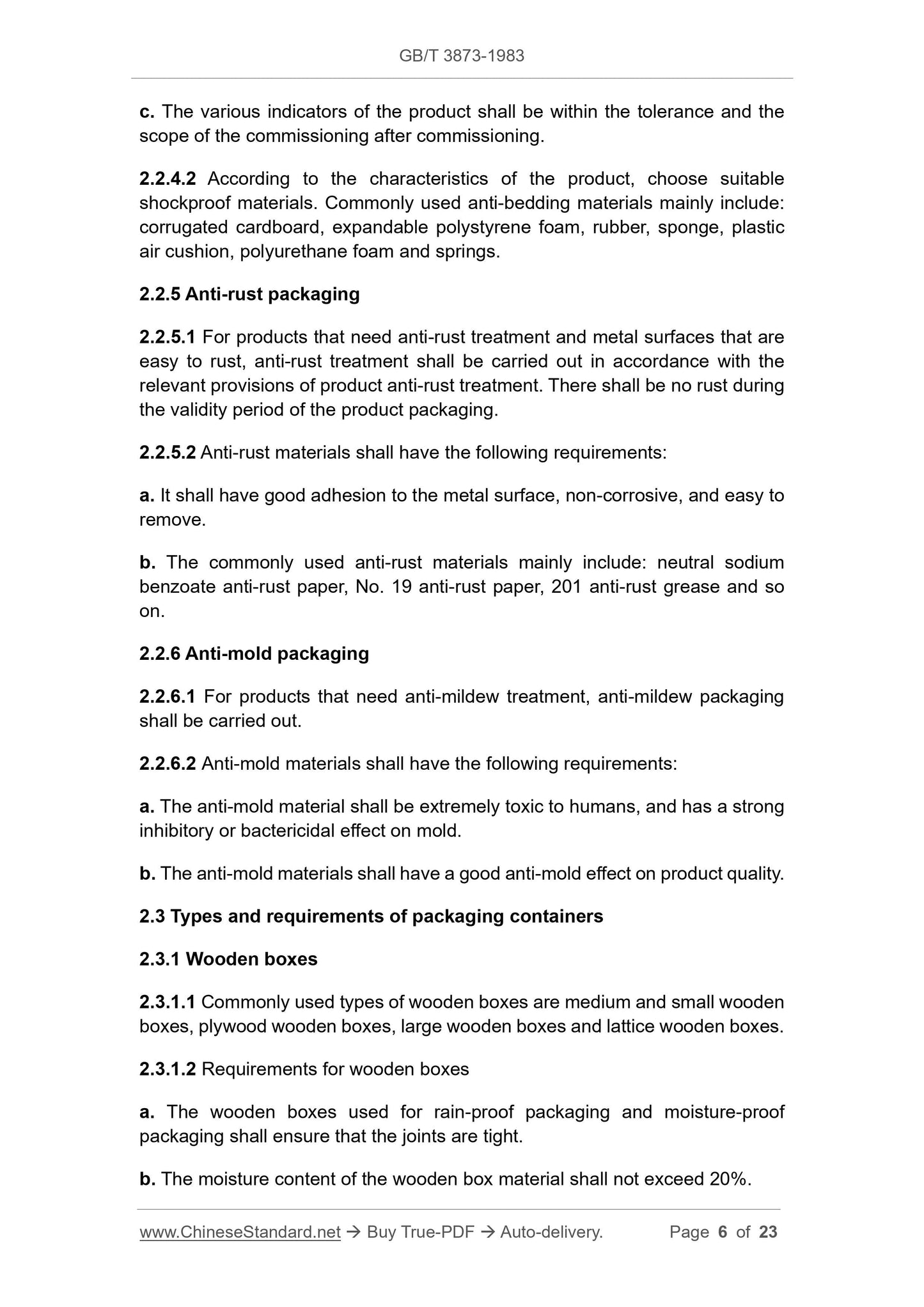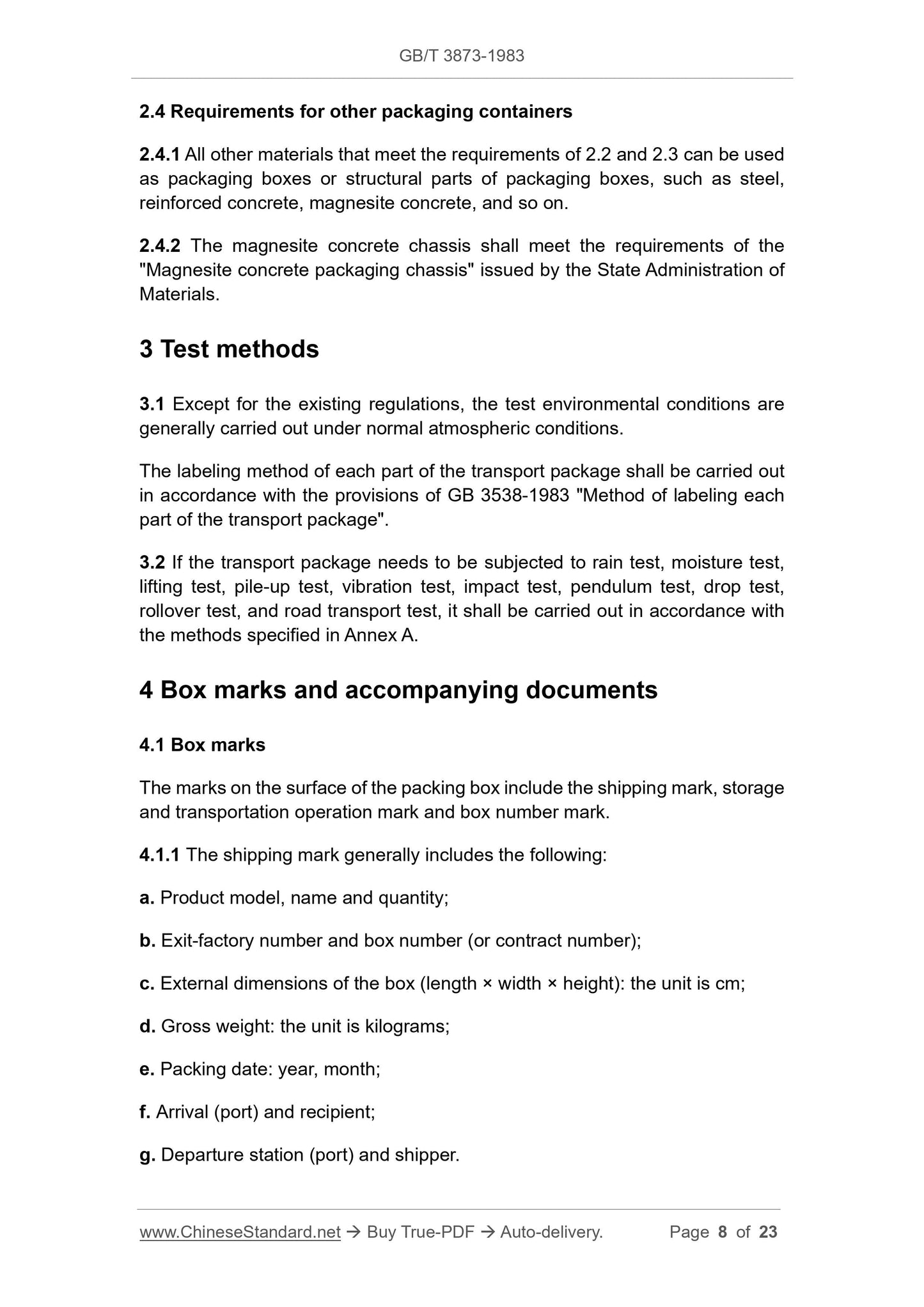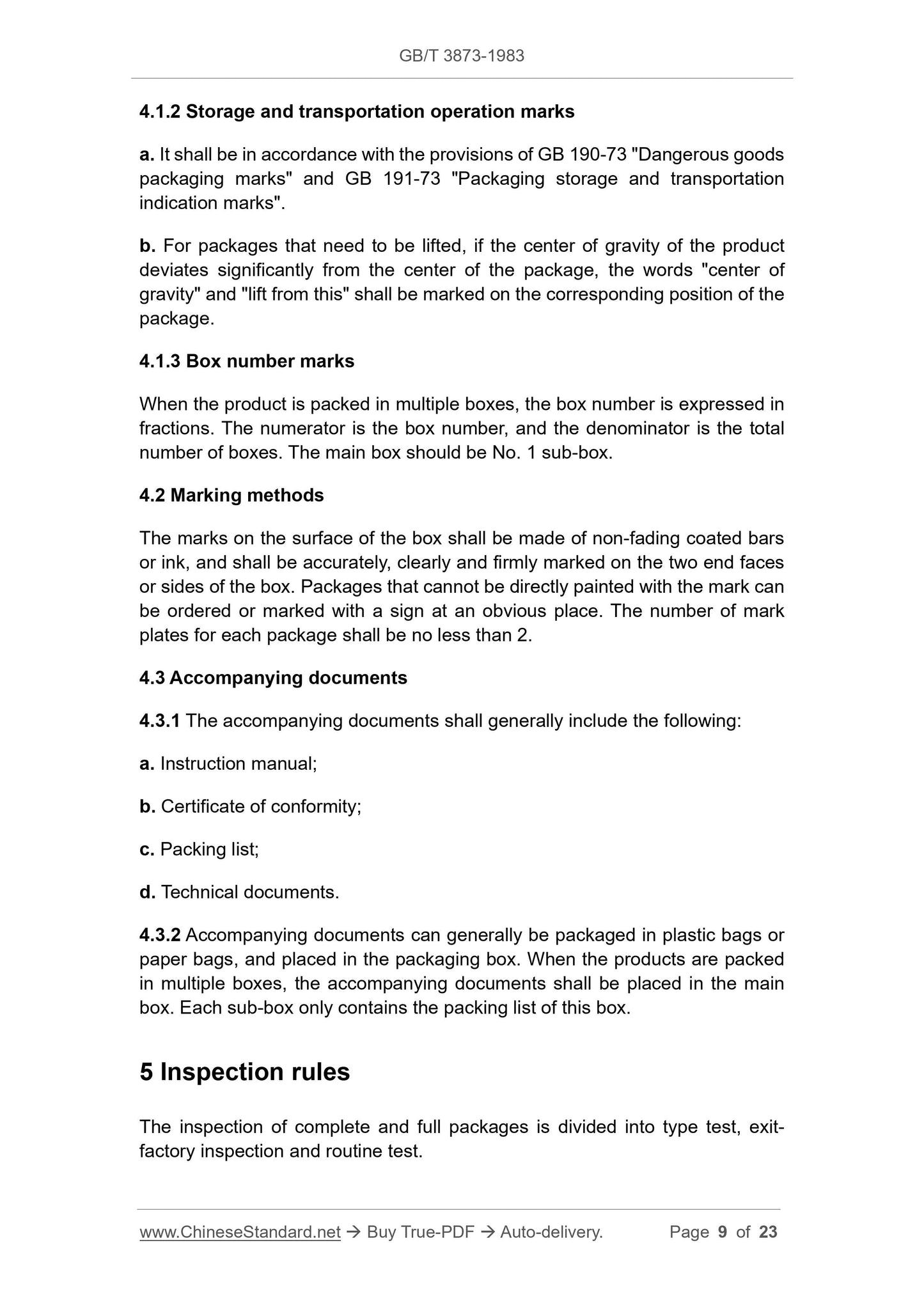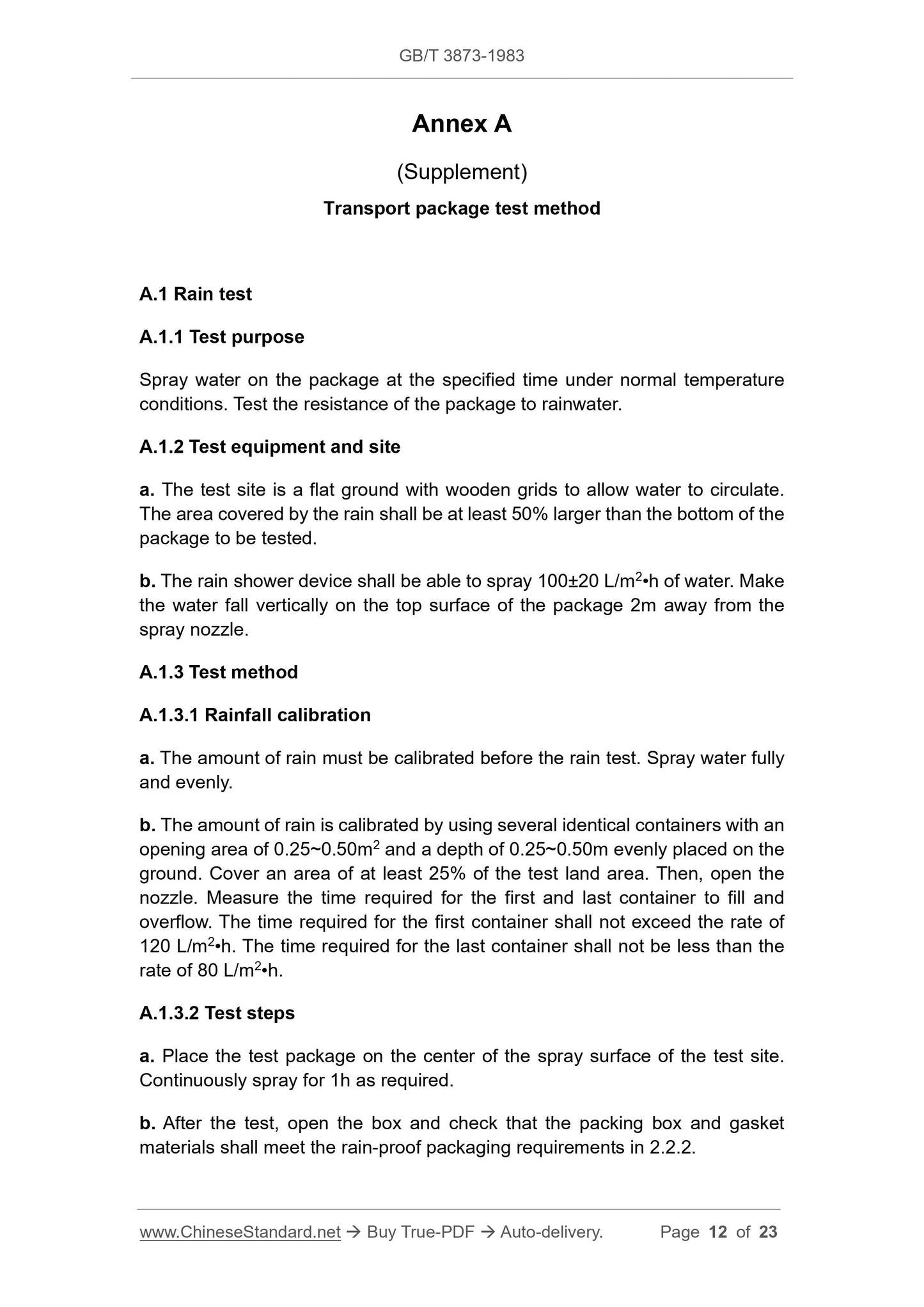1
/
of
8
www.ChineseStandard.us -- Field Test Asia Pte. Ltd.
GB/T 3873-1983 English PDF (GB/T3873-1983)
GB/T 3873-1983 English PDF (GB/T3873-1983)
Regular price
$210.00
Regular price
Sale price
$210.00
Unit price
/
per
Shipping calculated at checkout.
Couldn't load pickup availability
GB/T 3873-1983: General specifications for products packaging of communication equipments
Delivery: 9 seconds. Download (and Email) true-PDF + Invoice.Get Quotation: Click GB/T 3873-1983 (Self-service in 1-minute)
Newer / historical versions: GB/T 3873-1983
Preview True-PDF
Scope
1.1 Product packaging shall be designed according to the nature of the productand the environmental conditions of storage and transportation. It is required to
be well-protected, compact, firm and reliable, economical and reasonable, and
beautiful. Ensure that the product will not be damaged due to packaging and
reduce product quality during the process of loading-unloading and
transportation and within the validity period of the storage.
1.2 Before the new product is put into production, it must have product
packaging standards and design documents that meet the requirements of this
Standard.
1.3 The product packaging specified in this Standard is valid for two years from
the date of packaging. During this period, the warehouse where the product is
stored shall be well ventilated. The indoor temperature is -10~+40°C. The
relative humidity is not greater than 75%. Acid, alkaline or other harmful gases
in the air shall meet the requirements of environmental protection regulations.
Packages that need to be moisture-proof shall be placed on a rack that is 30cm
above the ground and 40cm away from the wall.
1.4 In case of special circumstances, according to the specific requirements of
product storage and transportation, according to the agreement between the
supplier and the demander.
1.5 Matters not specified in this Standard shall be implemented in accordance
with the relevant standards for railway, road, water, and air transport packaging.
General specifications for products
packaging of communication
equipment
UDC 621.798:654
2.2.3.1 Products that have undergone moisture-proof treatment, to protect the
product from moisture damage during storage and transportation, according to
the structure of the product and the requirements of different storage and
transportation environments, are classified into primary moisture-proof
packaging and secondary moisture-proof packaging.
a. Primary moisture-proof packaging
Before packaging, the product shall be parked for 24h for pretreatment in an
environment with a temperature of 20°C and a relative humidity of 65%. Use
moisture-proof sealing material with low moisture permeability and appropriate
amount of moisture absorbent to seal the product for packaging operation. No
rust or mildew is allowed on the surface and inside of the packaged product
during the validity period of the package.
b. Secondary moisture-proof packaging
Use low-moisture-permeable moisture-proof sealing materials and suitable
moisture-absorbing agents to seal the product and carry out packaging
operations according to the requirements of 2.1.3. The surface of the packaged
product and its interior are not allowed to have traces of water vapor adherence
during the validity period of the package.
2.2.3.2 Moisture-proof materials shall have the following requirements
a. They have good water resistance. The moisture permeability shall be less
than 10g/m2•24h. Commonly used moisture-proof materials mainly include:
polyethylene film, aluminum-plastic composite film, wax impregnated paper,
moisture absorbent and so on.
b. All kinds of plastic film bags (containers) used for moisture-proof and airtight
packaging shall be intact, free from damage and pinholes. The moisture
permeability of the sealing part cannot be greater than the moisture
permeability of the material itself.
c. The moisture content of the moisture absorbent shall not exceed 4%.
2.2.4 Shockproof packaging
2.2.4.1 Shockproof packaging shall be used for products that are delicate,
sensitive, or fragile in structure. The shockproof package shall meet the
following requirements after the shockproof project test:
a. The structure of the packaging container shall be free of deformation and
functional damage.
b. There shall be no mechanical damage on the surface of the product and its
parts.
c. The various indicators of the product shall be within the tolerance and the
scope of the commissioning after commissioning.
2.2.4.2 According to the characteristics of the product, choose suitable
shockproof materials. Commonly used anti-bedding materials mainly include:
corrugated cardboard, expandable polystyrene foam, rubber, sponge, plastic
air cushion, polyurethane foam and springs.
2.2.5 Anti-rust packaging
2.2.5.1 For products that need anti-rust treatment and metal surfaces that are
easy to rust, anti-rust treatment shall be carried out in accordance with the
relevant provisions of product anti-rust treatment. There shall be no rust during
the validity period of the product packaging.
2.2.5.2 Anti-rust materials shall have the following requirements:
a. It shall have good adhesion to the metal surface, non-corrosive, and easy to
remove.
b. The commonly used anti-rust materials mainly include: neutral sodium
benzoate anti-rust paper, No. 19 anti-rust paper, 201 anti-rust grease and so
on.
2.2.6 Anti-mold packaging
2.2.6.1 For products that need anti-mildew treatment, anti-mildew packaging
shall be carried out.
2.2.6.2 Anti-mold materials shall have the following requirements:
a. The anti-mold material shall be extremely toxic to humans, and has a strong
inhibitory or bactericidal effect on mold.
b. The anti-mold materials shall have a good anti-mold effect on product quality.
2.3 Types and requirements of packaging containers
2.3.1 Wooden boxes
2.3.1.1 Commonly used types of wooden boxes are medium and small wooden
boxes, plywood wooden boxes, large wooden boxes and lattice wooden boxes.
2.3.1.2 Requirements for wooden boxes
a. The wooden boxes used for rain-proof packaging and moisture-proof
packaging shall ensure that the joints are tight.
b. The moisture content of the wooden box material shall not exceed 20%.
2.4 Requirements for other packaging containers
2.4.1 All other materials that meet the requirements of 2.2 and 2.3 can be used
as packaging boxes or structural parts of packaging boxes, such as steel,
reinforced concrete, magnesite concrete, and so on.
2.4.2 The magnesite concrete chassis shall meet the requirements of the
"Magnesite concrete packaging chassis" issued by the State Administration of
Materials.
Basic Data
| Standard ID | GB/T 3873-1983 (GB/T3873-1983) |
| Description (Translated English) | General specifications for products packaging of communication equipments |
| Sector / Industry | National Standard (Recommended) |
| Classification of Chinese Standard | M08 |
| Classification of International Standard | 33.02 |
| Word Count Estimation | 15,134 |
| Date of Issue | 10/6/1983 |
| Date of Implementation | 5/1/1984 |
| Issuing agency(ies) | National Bureau of Standards |
| Summary | This Standard specifies the product packaging. Since the package is valid for two years from the date. In the meantime, warehouse storage products should have good ventilation, indoor temperature is -10 ~ + 40 ��, relative humidity less than 75%, the air acidic, alkaline or other harmful gases, should comply with the requirements of environmental protection regulations, the need moisture-proof packages should be placed more than 30cm from the ground, away from the wall material shelf 40cm away. |
Share
